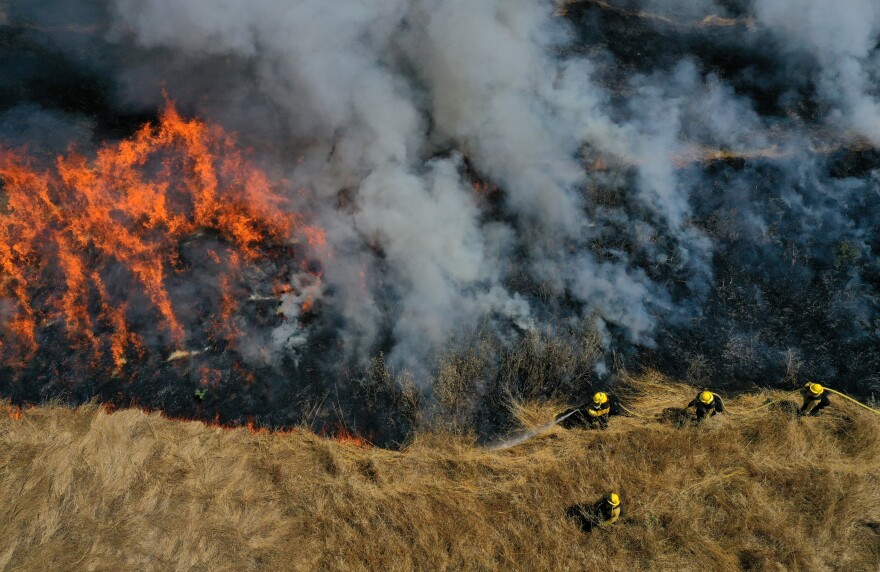Truth matters. Community matters. Your support makes both possible. LAist is one of the few places where news remains independent and free from political and corporate influence. Stand up for truth and for LAist. Make your year-end tax-deductible gift now.
Climate Change Is Shortening The Days For Prescribed Fires

A new study led by UCLA climate scientist Daniel Swain says climate change will reduce the number of days a prescribed fire can be used in Southern California.
Why it matters
Controlled burns are among the region's most common ways of preventing catastrophic wildfires. Firefighters in the Western U.S. have about 30 days per year to ignite controlled burns.
Now, rising temperatures could shrink that window to about 25 days. The conditions have to be just right. The days can't be too wet or dry, hot and windy. According to Swain, favorable days for prescribed burns in California typically happen on warmer days.
"If you have a warmer and sometimes dryer climate, you push yourself above the upper end of that acceptable envelope in these hotter and drier places," he said. "And therefore, you lose a lot of potential prescribed fire days in these places."
Do prescribed fires work everywhere?
If you have really extreme weather conditions, you might still have a high intensity fire in those areas, according to Swain.
"You probably don't want to be doing prescribed fire in landscapes, like high desert ones, where fires were rare, historically," he said. "We know that fires have devastated some of the Joshua tree stands in Southern California recently. So, no one's suggesting doing prescribed fires that would burn Joshua trees because they're not really fire adapted. They don't necessarily need fire in the same way that other ecosystems in the West do."
Making more with less
Swain says better staffing at the Forest Service, Cal Fire, the National Park Service and other agencies could create better efficiency with fewer days.
"We're going to have to be able to be nimble and to have year-round implementation," he said. "And so that's going to require policy changes and staffing changes and public education because there is still a lot of fear surrounding fire."
The backstory
Indigenous peoples have interacted with and actively manipulated fire for centuries, according to Swain. He says tribal nations, federal and state agencies have partnered around the West to revamp controlled burns on a larger scale.
What's next
By 2050 or 2060, the world could be 3.8 degrees warmer, and that could decrease the number of days when prescribed fires can be safely lit by 30 to 40% in California, Arizona and New Mexico.
Go deeper
We cover prescribed burns in these two terrific episodes of our The Big Burn podcast.
Read more: Cal Fire fumbles key responsibilities to prevent catastrophic wildfires despite historic budget











